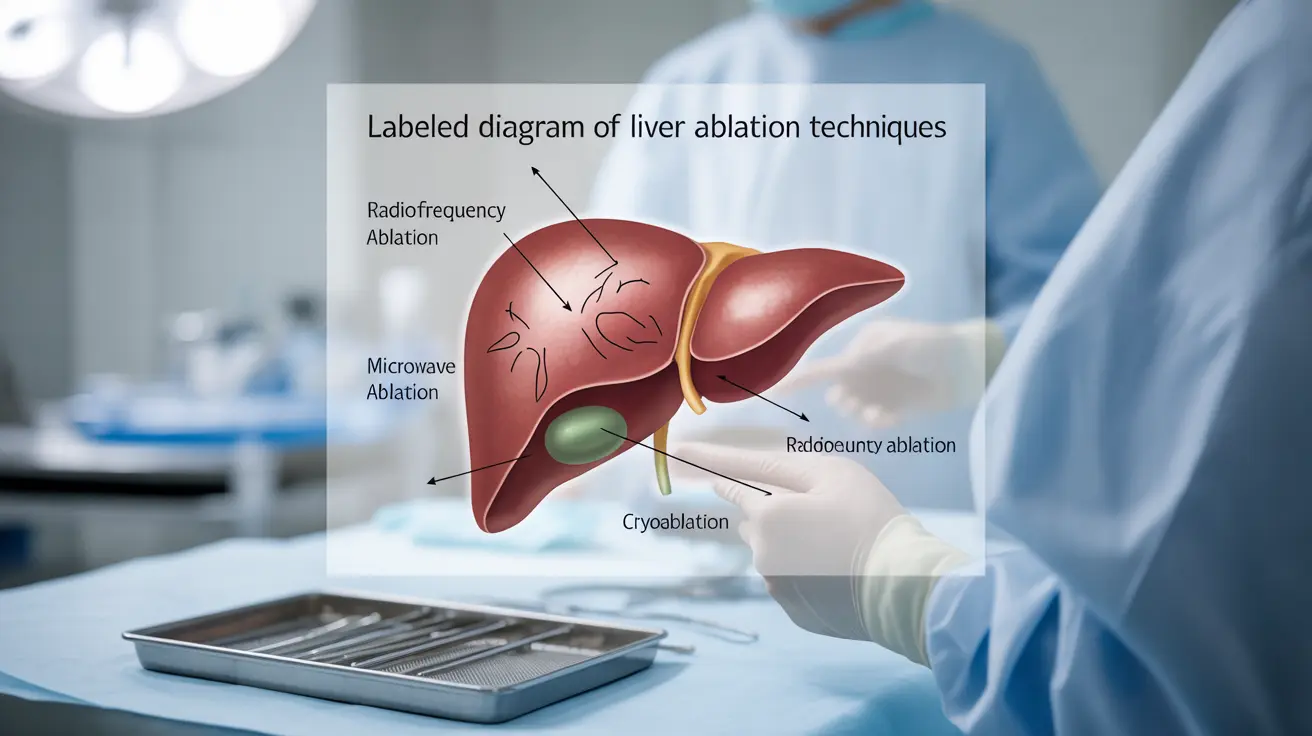Liver cancer ablation has emerged as a crucial treatment option for patients with liver cancer, offering a minimally invasive alternative to traditional surgery. This innovative approach uses various techniques to destroy cancer cells while preserving healthy liver tissue, making it an important consideration for many patients diagnosed with liver cancer.
Understanding the success rates, candidacy requirements, and different ablation methods can help patients and healthcare providers make informed decisions about treatment options. Let's explore the key aspects of liver cancer ablation and its effectiveness in treating this challenging condition.
Types of Liver Cancer Ablation Techniques
Several ablation methods are available for treating liver cancer, each with specific advantages and applications:
Radiofrequency Ablation (RFA)
RFA uses high-frequency electrical currents to generate heat, destroying cancer cells while minimizing damage to surrounding tissue. This technique is particularly effective for tumors smaller than 3 centimeters in diameter.
Microwave Ablation
This method employs electromagnetic waves to create heat, offering faster treatment times and the ability to treat larger tumors compared to RFA. It's especially useful for tumors located near blood vessels.
Cryoablation
Using extreme cold to destroy cancer cells, cryoablation can be particularly effective for tumors in specific locations where other techniques might be challenging to apply.
Success Rates and Treatment Outcomes
The success rate of liver cancer ablation varies depending on several factors, including tumor size, location, and the patient's overall health. For small tumors (less than 3 cm), success rates can reach up to 80-90% in carefully selected patients.
Long-term survival rates are most favorable when:
- Tumors are small and few in number
- The cancer hasn't spread beyond the liver
- The patient has good liver function
- Treatment is performed at an experienced medical center
Ideal Candidates for Liver Cancer Ablation
The best candidates for liver cancer ablation typically share several characteristics:
- Early-stage liver cancer
- Tumors smaller than 3-5 centimeters
- No more than 3 tumor sites
- Adequate liver function
- Cannot undergo surgery due to health conditions or tumor location
Risk Factors and Side Effects
While generally considered safe, liver cancer ablation can have potential complications:
- Bleeding at the treatment site
- Infection
- Temporary pain or discomfort
- Damage to nearby organs
- Fever and flu-like symptoms
Frequently Asked Questions
What is the success rate of ablation therapy for liver cancer and how does it compare to surgery?
Ablation therapy shows success rates of 80-90% for small tumors, comparable to surgery in carefully selected patients. While surgery remains the gold standard for some cases, ablation can be equally effective for small, early-stage tumors, especially in patients who aren't surgical candidates.
Who is the best candidate for liver cancer ablation treatment?
Ideal candidates have early-stage liver cancer with tumors smaller than 3-5 centimeters, no more than three tumor sites, and good liver function. Patients who cannot undergo surgery due to other health conditions often make excellent candidates for ablation.
What types of ablation techniques are used to treat liver cancer and how do they work?
The main techniques include radiofrequency ablation (using heat from electrical currents), microwave ablation (using electromagnetic waves), and cryoablation (using extreme cold). Each technique destroys cancer cells through different mechanisms while aiming to preserve healthy tissue.
How effective is liver cancer ablation at preventing tumor recurrence and what are the survival rates?
Effectiveness in preventing recurrence varies by case, but five-year survival rates can reach 40-70% for early-stage patients. Regular monitoring is essential as local recurrence can occur in 10-20% of cases.
What are the risks and side effects associated with liver cancer ablation therapy?
Common side effects include temporary pain, fever, and minor bleeding. More serious but rare complications can include infection, damage to nearby organs, and major bleeding. Most patients experience minimal side effects that resolve within a few days to weeks.




